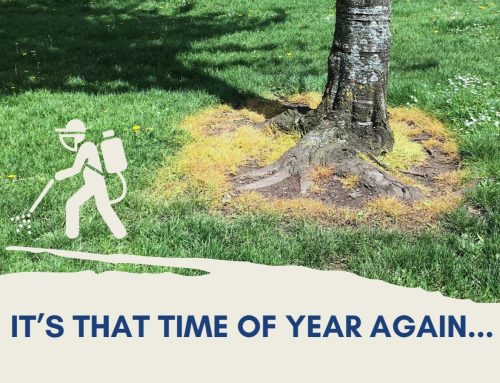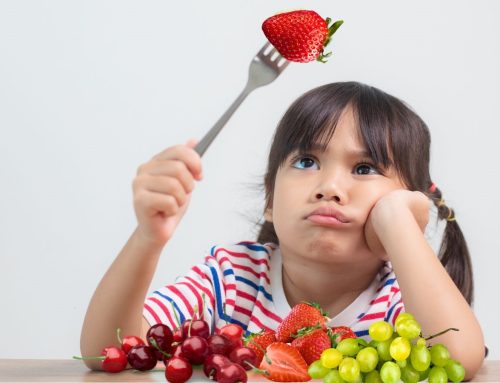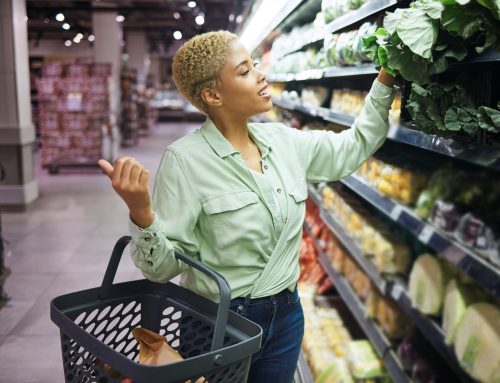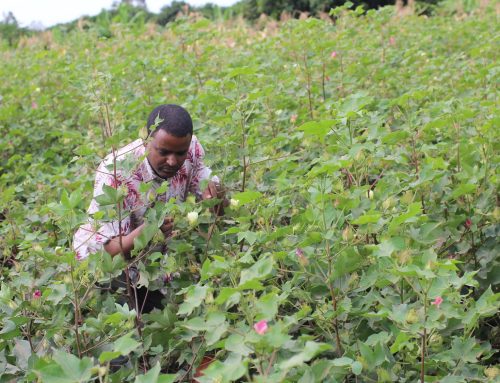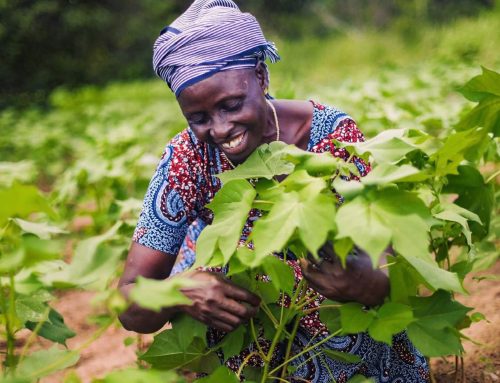by Lucy Sabin
Andalusia. A region in Southern Spain often associated with sunshine, blue skies, and the rich cultural life of its capital, Seville. If you enjoy strawberries with cream or chopped up in a cocktail then chances are you have tasted a part of Andalusia, a part less known to the public. In Andalusian provinces such as Huelva, the strawberry industry is Big Business. Some parts of the landscape are covered in seas of plastic polytunnels that extend towards the horizon and are visible from outer space. These are the strawberry fields.
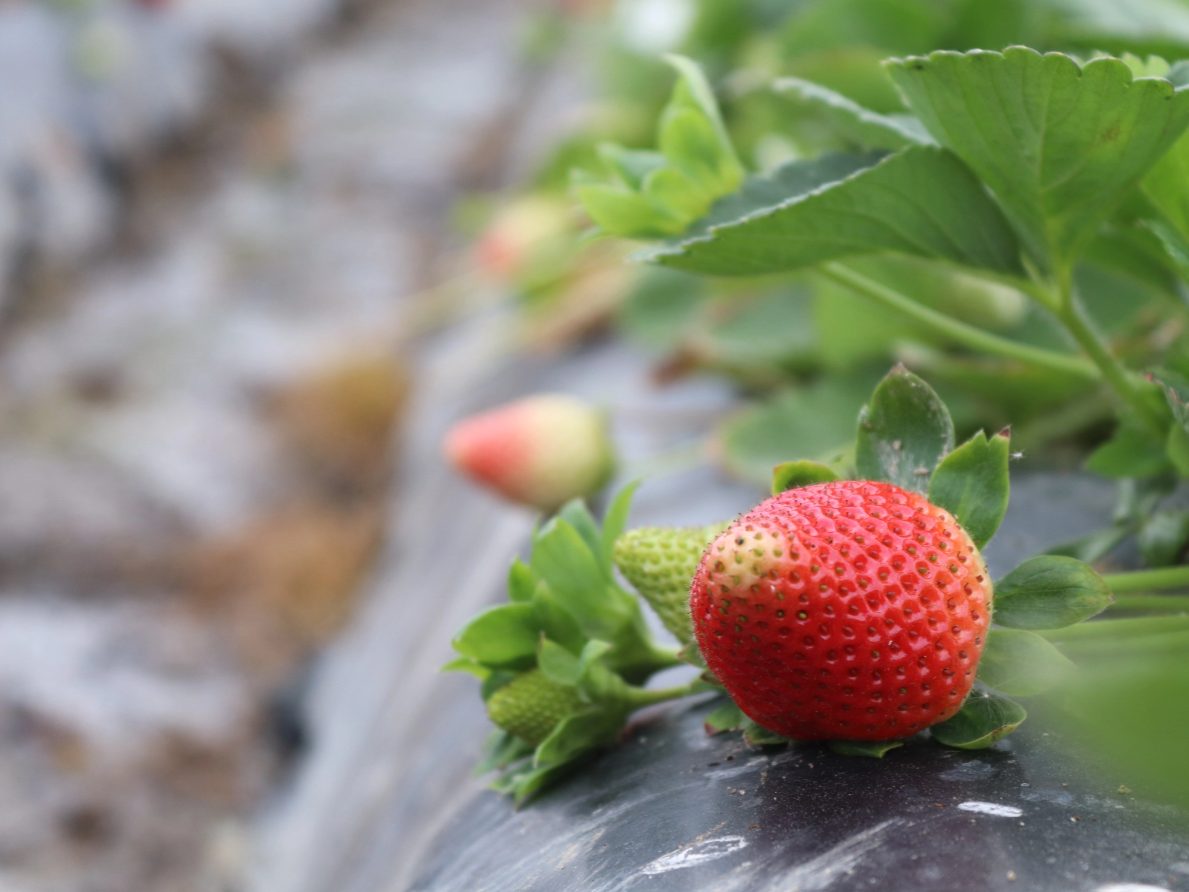
Among the undulating swathes of transparent plastic, the occasional outbuilding is tucked away. During the growing season, which runs from January to June, it is customary to see washing lines strewn up around these buildings. Seasonal workers form temporary communities; they live together, do laundry together, and pick strawberries together. The workers are mainly women from Morocco with children under the age of 14. Young mothers are systematically selected as part of a transnational policy designed to prevent permanent settlement in Europe.
Conditions in the strawberry fields are tough and often exploitative. Workers reside in these remote locations without means of transportation, their access to healthcare is further complicated by the denial of citizenship, and the prospect of whistleblowing is dampened by a general fear of being blacklisted by employers. Bending over and lifting crates day in and day out is physically strenuous. To make matters worse, the women are routinely exposed to high concentrations of toxic pesticides in the air and soil.
The cultivation of perfect strawberries requires a toxic cocktail of synthetic products, known as “Plant Protection Products” or PPPs. These are administered by spraying above the crops. A high percentage is lost in the air, known as “spray drift”. In the enclosed space of the polytunnel, workers suffer acute exposure to these poisonous chemicals. As one unionist and former strawberry picker reported:
“There are times when they are fumigating next to you, and you have no protection whatsoever. You start with horrible headaches, stomach aches and it’s horrible, it’s horrendous, but nobody has ever investigated the health problems that people who work in the strawberry fields are suffering from.”
Confirming the lack of protective equipment, a co-worker stated, “As I bend over to pick the fruit, the dust [from the chemical product] goes up my nose and makes my eyes water”.
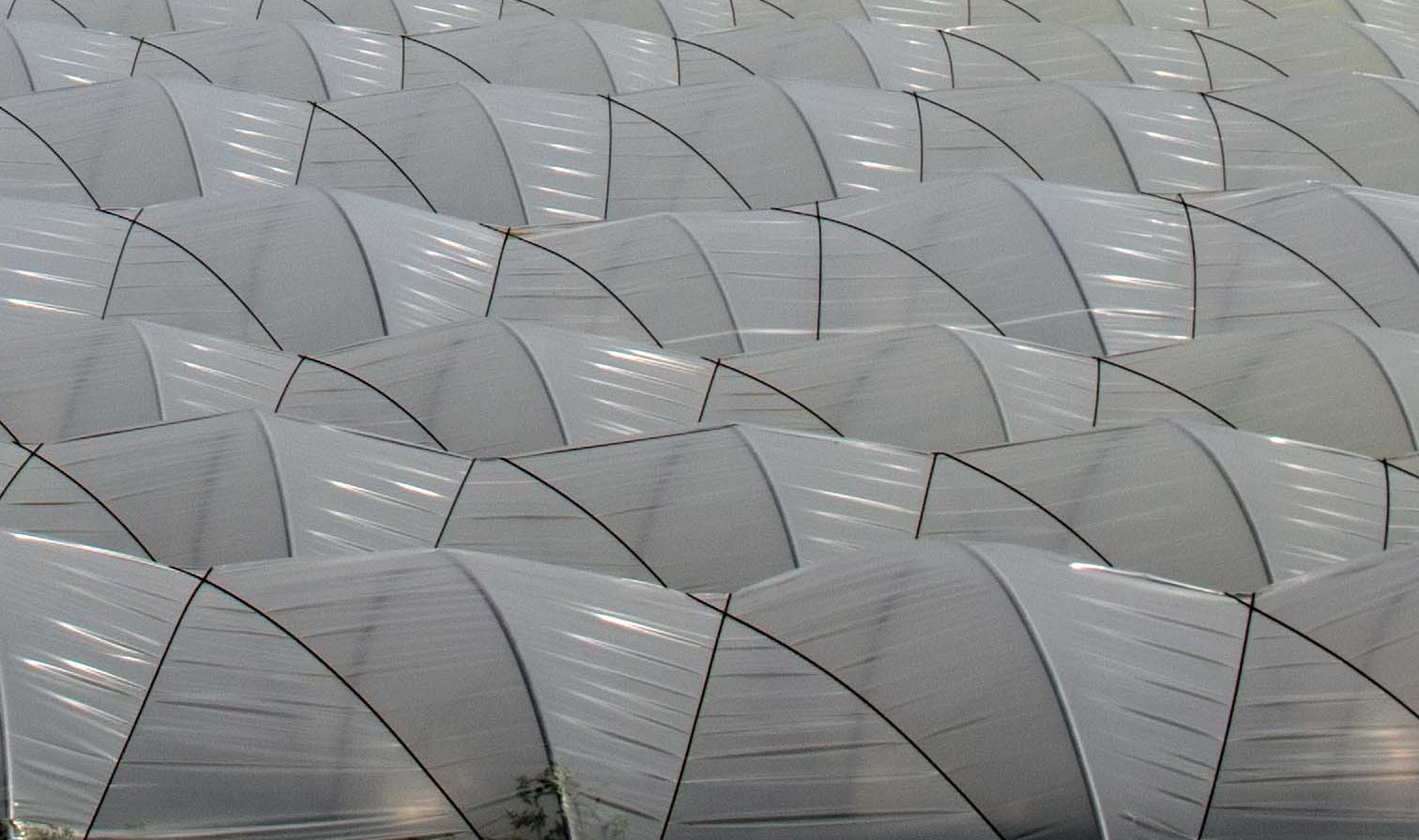
Sea of plastic, Huelva, by Lucy Sabin, March 2022.
Swiss researcher, Nora Komposch, has conducted numerous interviews with the women to learn more about the health problems they are facing. While the short-term impacts are more self-evident, longitudinal studies in analogous farming regions have confirmed the devastating long-term repercussions of exposure to carcinogenic and hormone-disrupting PPPs.
According to local agricultural engineers, the “treatments” applied to strawberries include dichloropropene and another concoction dubbed chloropicrin. Cross-referencing these with the Pesticide Properties Database (PPDB) from the University of Hertfordshire, we ascertain that the soil fumigant dichloropropene (aka DCP) is “moderately toxic to birds, honeybees, earthworms and most aquatic organisms” while the fumigant insecticide chloropicrin (aka trichloronitromethane, chlorpicrine, PS) “is a potential skin, eye and respiratory tract irritant”.
Before 2007, it was common industry practice to spray strawberries with another substance called bromomethane (also known as methyl bromide, methyl fume, monobromomethane). Even though bromomethane is now banned because it depletes the ozone layer, traces can still be detected in soil. According to a recent statement from the PPDB, bromomethane “is considered to be a reproduction/developmental toxin as well as being neurotoxic and an irritant”.
In intensive regions like Huelva, harmful exposures accumulate in higher concentrations in the environment and in the bodies of those who are continuously exposed. The effect of multiple exposures is one of exacerbation.
The western Andalusian provinces of Huelva, Cádiz, and Sevilla make up an intensive area described by El Español as a “cancer triangle” for its disproportionately high rates of malignant tumours among the populace. Is environmental pollution to blame? There are other factors to consider besides agrochemicals, of course. But it is hardly insignificant that the largest radioactive waste deposit in Europe, a byproduct of manufacturing fertiliser, lurks just 500m from the city of Huelva and is slowly eroded by the Río Tinto river.
Over 60 years ago, biologist Rachel Carson warned against the widespread use of chemicals post World War II in her pioneering book Silent Spring. “Sprayed on croplands […they] lie long in soil, entering into living organisms”, wrote Carson. Or they “pass mysteriously by underground streams until they emerge and, through the alchemy of air and sunlight combine into new forms”. These persistent pollutants are also known as “forever chemicals”. Many are still in widespread use.
Spain is the most prolific producer of strawberries in Europe. Most of the yield gets exported to other European countries. And so, consumers of strawberries often enjoy the sweet fruits in blissful ignorance of the hidden environmental and human cost of their cultivation.
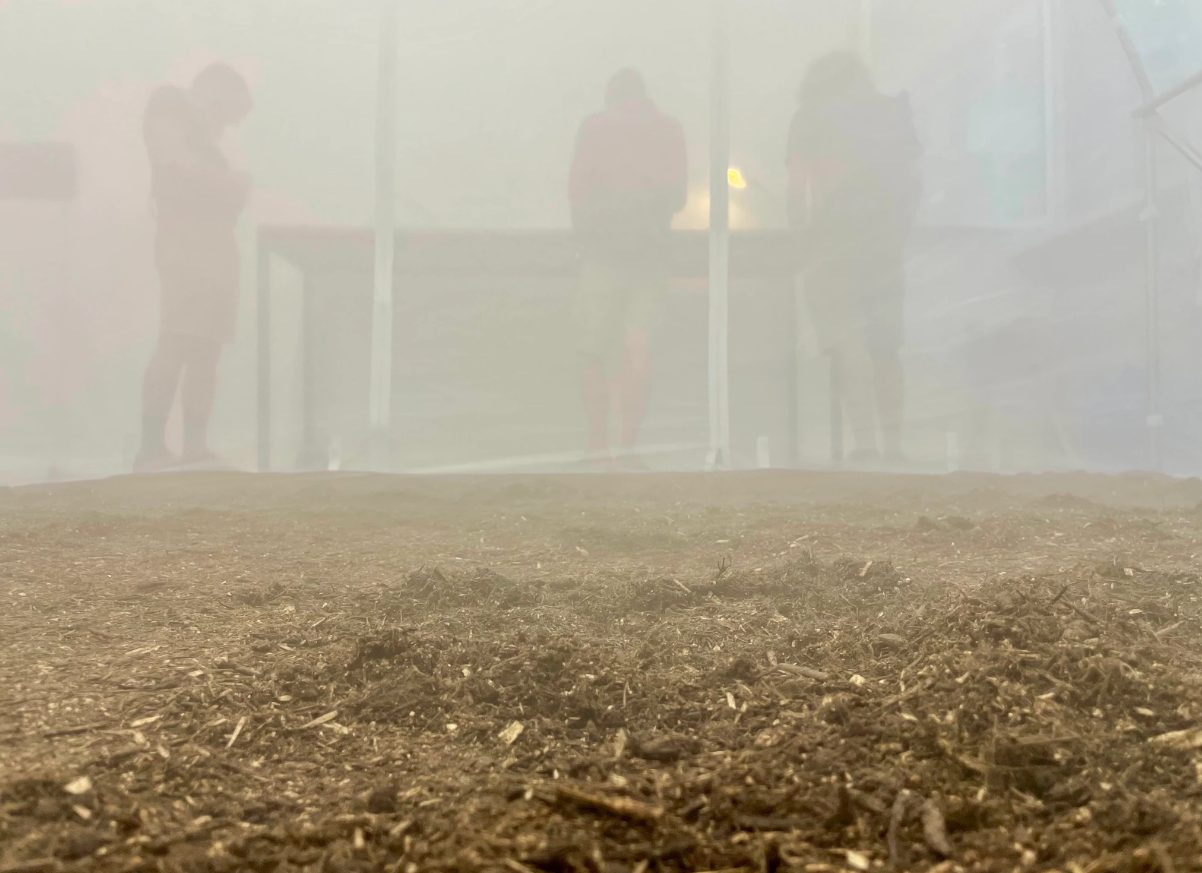
Close-up from Exposición, immersive installation, University of Bern, Lucy Sabin 2022.
A 2022 art exhibition at the University of Bern, that I designed in collaboration with Komposch, echoed the concerned voices of workers, environmental activists, and researchers from Andalusia. In the centre of the exhibition space stood a polytunnel that visitors could enter. The floor was blanketed in a layer of soil and the air was filled with a mysterious fumigant. Visitors could hear a composition of sounds that I recorded during fieldwork in Andalusia: footsteps, running water, machinery, delivery trucks, and human voices.
The immersive greenhouse installation implied a collective exposure to the chemical industries of food production, while also underscoring the systemic inequity of outsourcing harm to non-European labour exploitation. The idea behind the artwork was to provoke contemplation of the creeping co-extensiveness of chemical industries with the food we ingest, even and especially when it comes to the sweet and seemingly innocent strawberry.
Lucy Sabin is is an interdisciplinary researcher and experience designer based in London and Brighton. Her forthcoming PhD in Geography (UCL) reimagines the concept of ‘air quality’ in qualitative and creative ways. Connect with Lucy on LinkedIn here.

